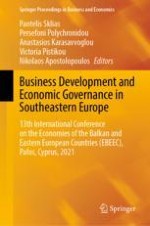2022 | OriginalPaper | Chapter
The Impact of Quantitative Easing on Stock Market: Evidence from Greece
Authors : Sofia Karagiannopoulou, Paris Patsis, Nikolaos Sariannidis
Published in: Business Development and Economic Governance in Southeastern Europe
Publisher: Springer International Publishing
Activate our intelligent search to find suitable subject content or patents.
Select sections of text to find matching patents with Artificial Intelligence. powered by
Select sections of text to find additional relevant content using AI-assisted search. powered by
